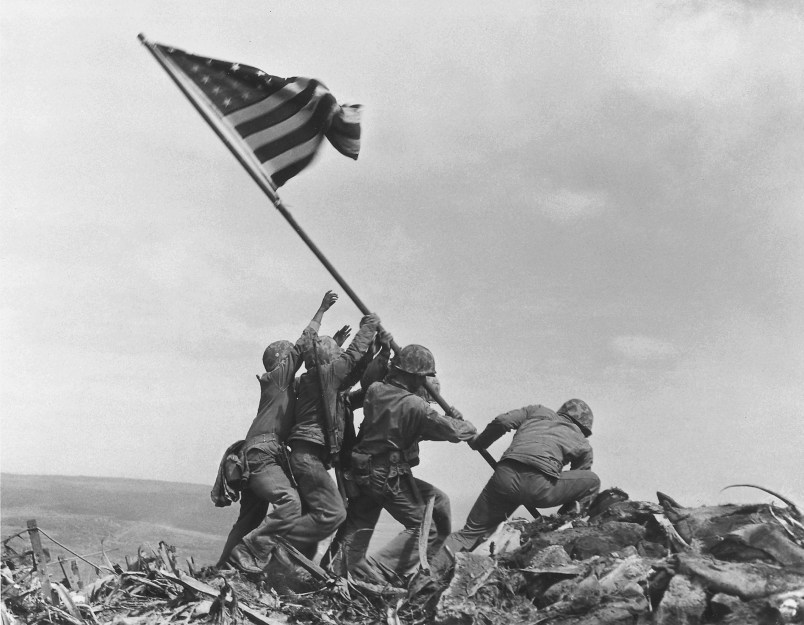It is perhaps the most iconic American photograph of the 20th century.
On February 23rd, 1945, US Marines captured Mount Suribachi, a key strategic objective in the Battle of Iwo Jima, a tiny Volcanic island approximately 750 miles south of Tokyo. Contrary to a widespread but erroneous belief, the photograph was not staged. Marines under the command Lieutenant Colonel Chandler Johnson had raised a smaller flag shortly after the position was taken just after 10 AM on the 23rd. But Johnson believed the flag was too small to be seen at a distance and had a second, much larger flag raised later the same day. Three of the six men captured in the image would be killed in action on Iwo Jima over the next four weeks – Harlon Block, Franklin Sousley, and Michael Strank. The three survivors were Marines Rene Gagnon and Ira Hayes, and Sailor John Bradley. The island was declared secure on March 26.
As this more recent photograph shows, Mount Suribachi dominates the island and was thus a key strategic objective of the initial assault.

The photograph was taken by a young Associated Press photographer, Joe Rosenthal. He would later be awarded a Pulitzer Prize for the photo.

Joe Rosenthal, AP
There was initial confusion about the fates and names of the men pictured in the iconic photo. This early infographic, contained incorrect names for some of the six men.








It was thrilling as a tourist to see the Iwo Jima Memorial. Really just took my breath away to see the bravery of Marines embodied in this sculpture.
Thank you for the memorable photographs in honor July 4. Finally photographs that actually show up instead of blank spaces. Somehow after TPM switched over I can no longer see many photographs and absolutely no videos.
I saw Iwo and Mt. Surabchi from a crippled B-29 attempting to land on Iwo in early June, 1945. We barely made it–with two engines out. Twice in the next two weeks more landings, one of which required an overnight stay. Iwo’s black sand, coffee-like beaches and the rocky volcanic terrain gouged and stripped of vegetation, steel rods of gun emplacements bent like leaves of grass, and with soil covering the still warm volcanic strata beneath, so warm that 30 minutes or so in the ground would heat cold ration containers are still retained in my memory. The cost was huge, some 6000 Marines and Navy medics; but from March till the end of the war some 2,000 B-29s landed after bombing Japan, damaged or low in gas, saving countless lives…
Thanks for putting those nice bits together, Josh. Great details. Fascinating.
As a former Marine, that picture never fails to move me,